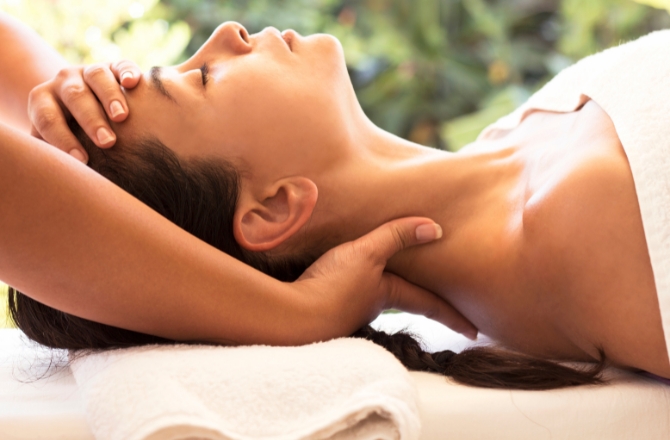
Why Are Muscles Sore After a Workout? Explainer & Recovery Tips
Ever woken up the day after a particularly strenuous workout and noticed a tight and stiff feeling in your muscles? You might think a day of rest will make the pain go away…only to wake up the next morning with even worse discomfort. That all–too–familiar feeling has a name, and it’s DOMS (or delayed onset muscle soreness). While perfectly normal, DOMS can get in the way of maintaining a regular workout schedule.
Luckily, some of the things to expect from FS8 classes include warmups and cooldowns to help reduce muscle soreness after gym and keep your body feeling good. Ahead, learn how to reduce muscles soreness after hitting the gym so you can keep up with training at your local FS8 studio.
What causes muscle soreness after exercise?
DOMS or delayed onset muscle soreness typically happens after high intensity workouts, especially strength training. Here’s how it works:
- Muscles are stressed beyond what they are accustomed to (a necessary part of strength training).
- This causes tiny microtears.
- Next, muscles go into recovery mode.
- This leads to that stiff, tight feeling as muscles repair themselves.
So, how long does muscle pain last after gym? DOMS will usually dissipate a day or two after strenuous training, but depending on the intensity of the workout, it can take up to five days. Fortunately, adopting simple care steps can help lessen discomfort and shorten the time it takes for pain subside.
Delayed onset muscle soreness recovery tips
The importance of recovery is one of the key reasons why FS8 has a focus on whole body wellbeing. Warmups and cool downs are key ways to reduce muscle soreness after gym and they’re built into all FS8 workouts. In terms of how to prevent delayed onset muscle soreness, you may not be able to avoid it completely, but steps can be taken to help reduce discomfort. While staying hydrated and getting enough sleep can support muscle recovery, more intentional techniques include:
- Staying active between sets and on rest days.
- Getting regular massages or rolling out the muscles.
- Taking short ice baths or a long soak in a warm tub.
- Wearing compression garments during and after training.

Ahead, we break down how to implement each of these steps and why they work.
Stay active
Sometimes a little R&R is necessary, but passive rest days aren’t always the best for managing DOMS. The benefits of active recovery can provide a much-needed boost to your sore muscles after workout remedy methods. The human body is designed for movement, so while you may want to skip high intensity training when you’re experiencing DOMS, some gentle exercise can help ease muscle soreness and tightness.
It can be as simple as going for a walk, bike ride or a swim, but if you’re in the mood for something more structured, FS8 OG or FS8 Restore could be the perfect fit. When you are ready to hit the gym again, the advantages of low impact workouts can help you ease into the process at a lighter pace.
Muscle massage
If your fitness goals include achieving more muscle definition, full body toning workouts like FS8 Remix are a must. However, working multiple muscle groups can lead to DOMS – so we recommend trying post-workout massage as a DOMS management technique. If a professional massage isn’t a feasible option, another way to support delayed onset muscle recovery is by using a foam roller right after training. This can be done throughout the day until your muscle pain is barely noticeable¹.
Baths
There’s nothing quite like a long bath after working the whole body with high energy classes like FS8 OG – and the benefits go beyond just relaxation. Applying warmth with heat packs, moist wraps or a bath can help lessen the discomfort of DOMS.
Cold immersion can be even better than heat exposure – ice baths are a popular pain relief option among competitive athletes and have been shown to ease tight, stiff muscles associated with DOMS. While it can be a little intimidating, a 10–15-minute ice bath (or even just a cold shower) might be just what your body needs to support muscle soreness after gym.
Compression garments
It’s important to wear the right clothing when working out. This is especially true for high energy, fast paced classes which require more flexibility. For this, compression garments are ideal – they remain tight fitting and offer pressure on the body which can help improve blood flow.
Popular amongst gym goers, compression clothing is thought to improve performance overall, but it can certainly help to reduce muscle soreness after gym. Plus, activewear is a fun way to show off your style – an aesthetic bonus!
¹https://www.frontiersin.org/articles/10.3389/fphys.2017.00747/full

